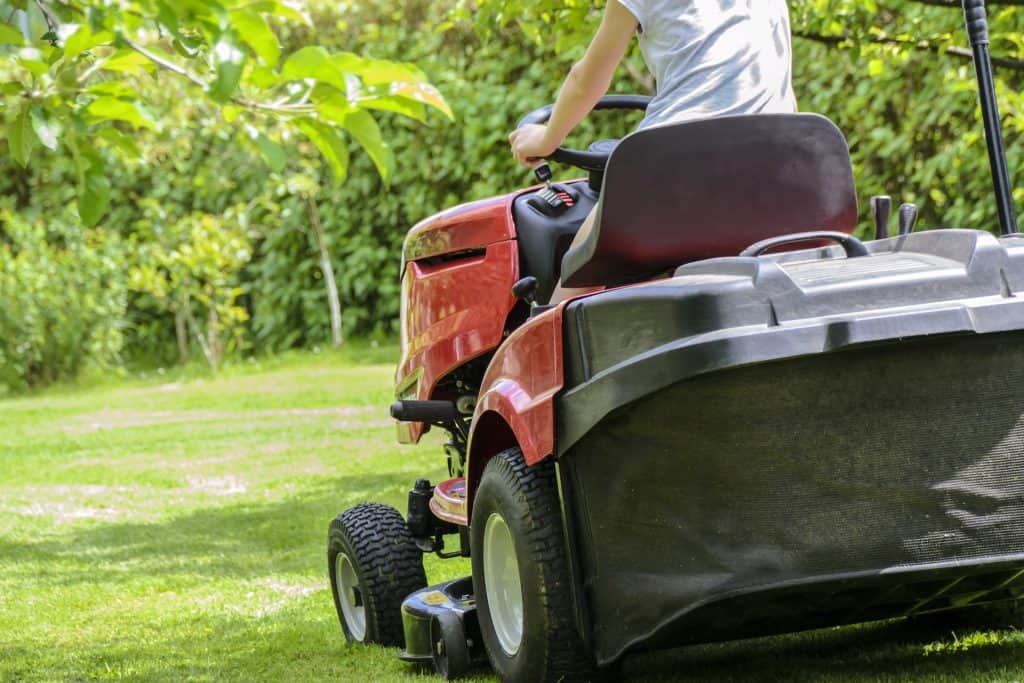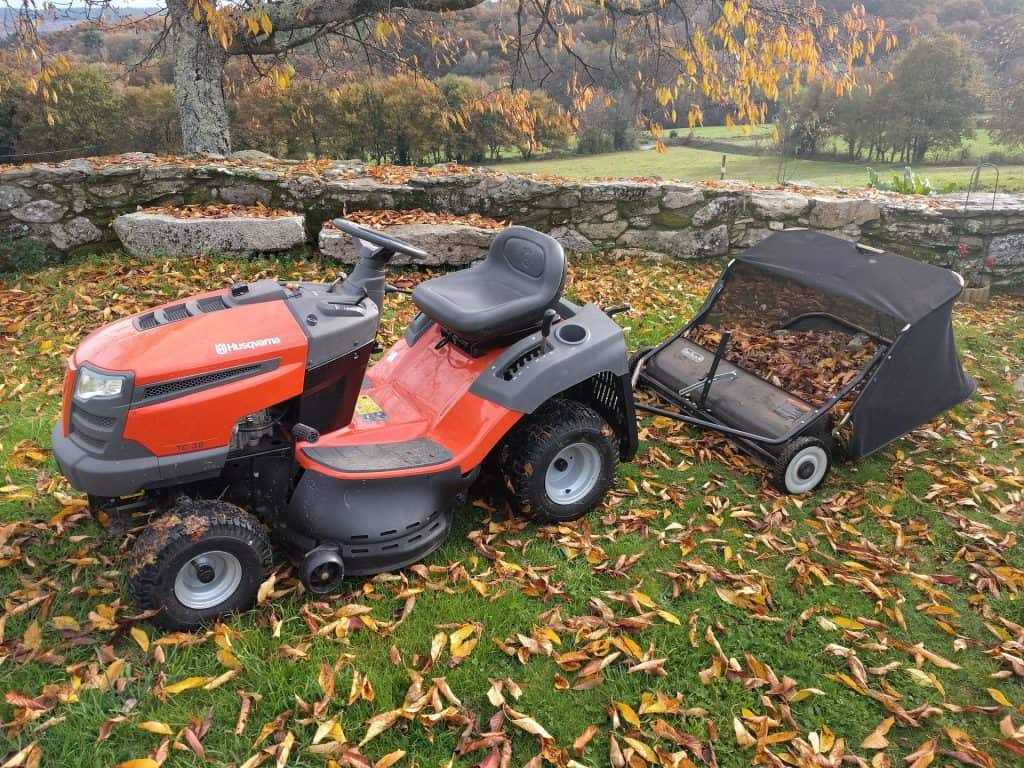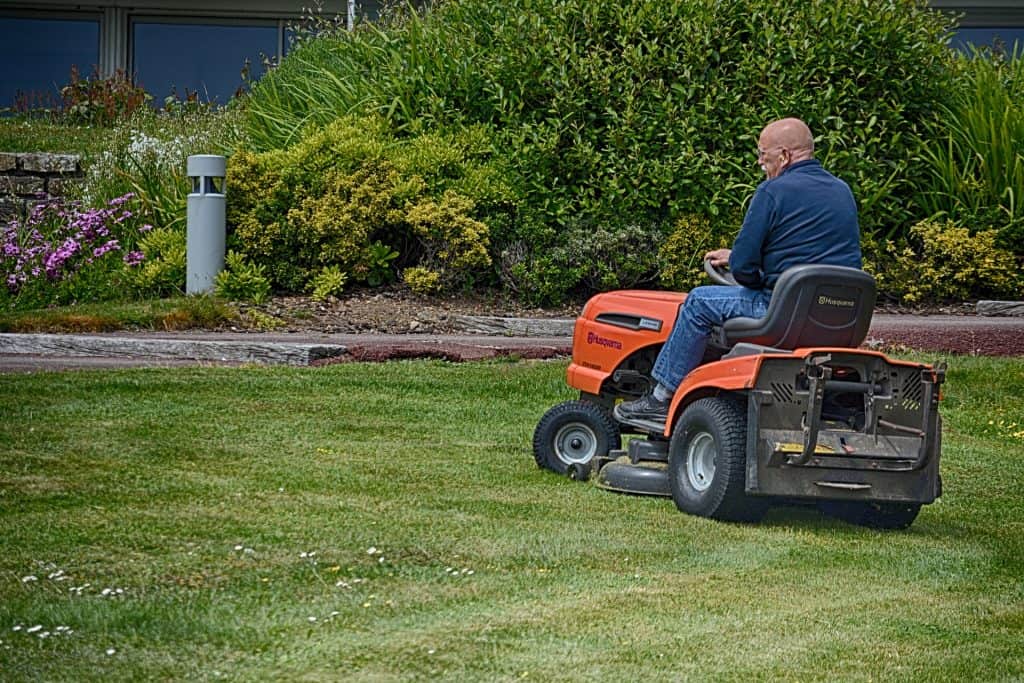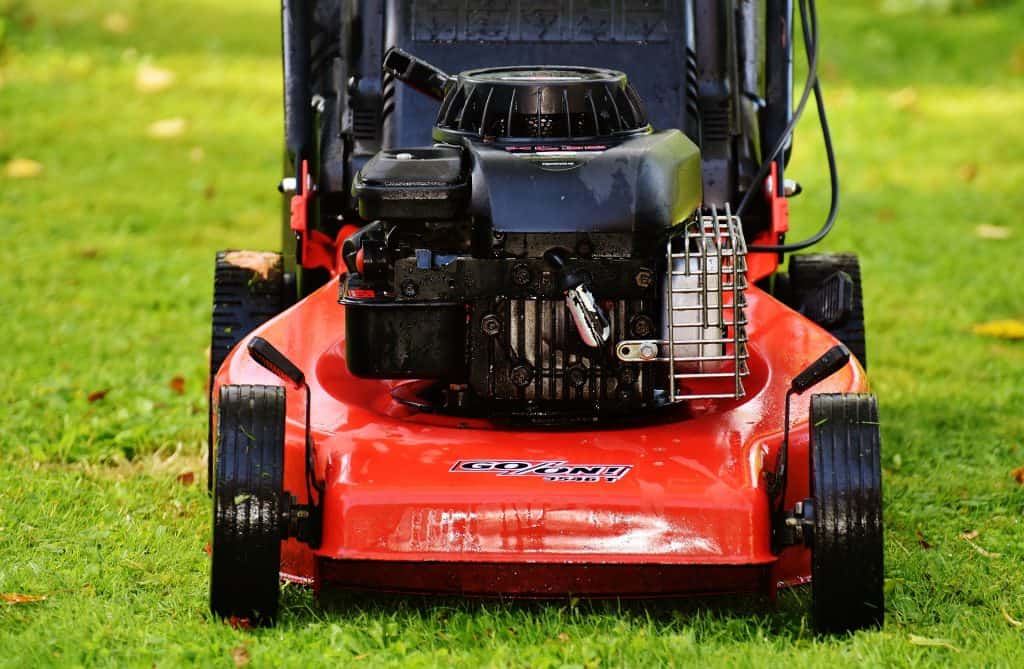There are plenty of ways to make your hydrostatic lawn mower move faster. Here we’ll be discussing a few steps you can take to ensure that your lawnmower is moving at a faster pace, ensuring that your lawn is mowed perfectly in a shorter period.
So, how can you make a hydrostatic lawn mower move faster?
What Is a Hydrostatic Lawn Mower?
There are various types of lawn mowers available in the market. There’s the Automatic Lawn Mower, the Manual Lawn Mower, the Transmatic Lawn Mower, and the Hydrostatic Lawn Mower.

While most people with small lawns don’t need a heavy duty mower, those with larger areas to mow need something bigger. There are different types of riding mowers available, but one great option is a hydrostatic version.
What makes the Hydrostatic lawn mower different than the others is:
- Its velocity is controlled using a hydraulic pump
- The Hydraulic pump is what controls the direction you’re riding
- Its system happens to be gear-free, unlike the Manual Lawn Mower
- It’s pretty simple to use
- The speed is controlled using a gas pedal, very much like an automatic car
- Their power is transferred from the engine to the wheels using fluids rather than belts
Even though Hydrostatic lawn mowers seem to be much more convenient than other types, there are times where they can slow down… dramatically. If you find yourself in that situation, here are some steps you can take to ensure that this isn’t a problem anymore.
How to Make a Hydrostatic Lawn Mower Faster
As time goes by you’ll notice that your lawn mower is slowing down. While each lawn mower has a specific life-span, it’s still wise to take good care of your lawnmower so that it stays efficient for an extended period.
Check Air Filter
For the engine to be running optimally and to reach the best speed, the utmost airflow is preferred. Thus, you need to regularly check the air filter, to do that, follow the steps below.
- Turn off the engine and wait until all the parts stop moving.
- Disconnect spark plug wire.
- Remove the air filter cover.
- Remove the previous air filter and throw it away.
- Place a new air filter.
- Reconnect spark plug wire.
Check Muffler

Another thing you can do is check that the muffler on the tractor has no extra holes added.
To do that, follow those steps:
- Turn off the engine and wait until the tractor stops moving.
- Locate the muffler on your tractor’s engine, it’s usually located near the cylinder head.
- Check the outside of the muffler for extra holes, dust, cracks or rust.
- If you find nothing, leave it be. If you find any of the above problems, replace it.
These extra holes will eventually lead to a drain and leakage, which will then decrease velocity.
To replace a muffler, follow those steps:
- Check if the muffler is attached using mounting bolts.
- Check whether it has locking tabs around them or not.
- If they do, bend those tabs enough so that you can use a wrench to remove bolt heads.
- Remove bolts from the muffler and detach them.
- If muffler screws from the engine, use penetrating oil on engine threads.
- Leave the oil on it for several minutes.
- If needed, tip the engine very carefully to allow the oil to reach threads.
- Remember not to tip oil sharply because it might cause the oil to drain into the carburetor or air cleaner.
- If your muffler is tied with a threaded lock ring, loosen it using hammer and pin punch.
- To do so, tap it once or twice counterclockwise.
- Afterward, grasp the muffler with a pair of slip-joint pliers.
- Use these to unscrew the threaded lock ring, counterclockwise.
- Inspect muffler, and if it’s damaged, replace it with a genuine replacement part.
- When attaching a new one, don’t over-tighten it.
- If the lock ring was used, install it again using a hammer and pin punch.
- Make sure when attaching the lock ring that the smooth side is against the cylinder.
Remove Any Excess Weight

While it does serve its purpose of protecting your lawn mower’s motor, the case on the engine is not completely necessary. However, by removing it, you might be exposing the motor to possible damage in the long run, so when you’re done, put it back on.
- Turn off the engine and wait until the motor is cold to touch
- Remove the screws of the engine cover
- Carefully remove the cover off the engine
Adjust the Blades
Your blades might be causing some of your speed problems, and removing the blade to tune it up might help. Even the top end mower blades need balancing and sharpening sometimes.
- Park the mower someplace where the blades are on a surface level.
- Turn off your engine and wait for it to cool down.
- Make sure that no part is moving before attempting to remove the blades.
- Raise the mower deck to the highest position
- Remove spark plug wire for safety
- Make sure to wear gloves for safety
- Position yourself so that you’re alongside the mower deck
- Make sure the mower blades are easily accessible
- Using a block of wood, place it against the baffle, under the deck.
- Then turn the deck till it contacts the block and is wedged in its place.
- Loosen the bolt on the blades using a wrench
- Pull bolt and washer from the bolt and spindle
- Remove blade from the spindle.
Your blade might need balancing, which will improve its performance. You can sharpen it at the same time, so that it cuts better and doesn’t get bogged down as quickly.
Cutting thicker grass with specialized blades will typically slow a machine down.
Change the Oil
Sometimes, the fluid used to lubricate the motor can make or break its speed.

- Look up your machine’s specifications
- Make sure to identify the brand that will work with your tractor
- Check motor oil’s capacity
- Check size and type of oil filter
- Park tractor on a stable surface and turn off the engine
- Set parking brake and wedge tires to ensure no movement
- Find the tractor’s drain plug, you’ll find it at the bottom of the engine’s block
- Before attempting to drain oil, slip-on gloves to prevent skin irritation
- Use wrench to loosen drain plug by turning it counterclockwise
- Wipe the plug clean and look for the aluminum/copper crush washer that seals it shut
- Keep those items aside because you might need to replace them
- Leave the oil to drain and locate the oil filter
- Using a towel, remove the filter
- Reinstall oil filter after oil drains completely
- Make sure to tighten the drain plug
- Refill with new oil and throw away the old one
- Ensure that there are no leaks
Use Higher Octane Fuel
Higher octane fuel burns quicker and gives the engine a higher power. However, it tends to be on the pricey side.
Also, you need to check that the ethanol level in that fuel is less than ten percent. Too much ethanol can corrode the insides because ethanol absorbs water from the air.
Conclusion
As long as all parts of your hydrostatic lawn mower are in good shape, everything will run smoothly. You’ll also be able to achieve maximum speed using the guide above.
Just make sure to look it over every now and then. Ensure the removal of any obstacles that can be in the way and you’ll enjoy a hassle-free ride of 30 mph without any worries!